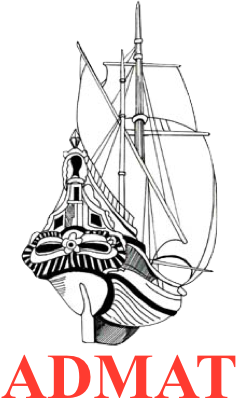ADMAT-FRANCE Conducts RAMAM Microprobe Tests On Le Casimir Artefacts From Monte Cristi
Dr. Francois Gendron setting up the RAMAN Microprobe at the Institute in Paris
Le Casimir is a French brig which sunk in 1829 in seven to eight metres at the base of a fringe reef in Monte Cristi. The medicine phial artefact No: PBW/2006/Mv/G/5947 was found on the Le Casimir wreck site with a three quarter intact cork. This is extremely unusual that the cork survives and therefore there was a possibility that the residue in the bottom of the phial could contain information as to what was the medicine. Permission was granted by ONPCS for ADMAT to hand carry this delicate glass artefact to Paris where tests were started at ADMAT-FRANCE by Dr. Francois Gendron at the Institut de Paléontologie Humaine, Muséum National d’Histoire Naturelle. Upon examination it was found there was a black residue which had a crust on the surface. Therefore there was a strong possibility that analysis could provide vital information.
There are a number of scientific tests that can be performed. The first one is the RAMAN Microprobe Test, which in summary is a laser beam which is fired through the glass and analyses the content. This is the first test which is being performed by Dr. Francois Gendron and then researched by Prof. David C. Smith from the Museum National d`Histoire Naturelle, dept. Histoire de la Terre (Spectroscopy Raman, Mineralogy).
The second will be the Infra Red examination by Dr Aisha Gendron-Badou and Prof. Francois Fröhlich at the Museum National d`Histoire Naturelle, dept. Prehistoire, Centre de Spectroscopie Infra-Rouge. These second tests will also analysis the type of glass used for the bottle, whether it is lead crystal or not and possibly give indications as to the region where it was manufactured.
Dr Gendron et al. wrote an article on the benefits of RAMAN Microprobe in Archaeometry when he was referring to his teams work on the discovery of jadeite-jade in Guatemala. He stated the following:
“The “Raman Effect” was discovered by Prof. C. V. Raman in 1928 and involves shifts in the wavelength of incident light according to the vibrational energies of specific chemical and geometrical combinations of atoms, i.e. molecules or portions of crystals. These shifts are detected and converted optically and electronically into a spectrum where each band or “peak” represents a specific atomic vibration whose wave-number (reciprocal of wavelength) gives its energy and whose intensity is a function of its concentration. Since all distinct materials yield distinct Raman spectra, un-known materials are identified by comparison of the wave numbers of several bands in their Raman spectra with those standard materials in catalogues of reference.”
In other words by recording the result of firing the laser beam through the glass and onto the object, by research and comparison it the chemical compound can be identified. The added advantage is that this test is non destructive to the bottle and the object. The first part of the test is to calibrate the laser on two known items. Once this has been done the medicine phial was then placed in front of the laser. When the laser was fired the spectrum was analysed and compared to the programs comparable. However this result had no comparable already documented in the computer and so further comparable will be researched to identify the frequency wave of the content of the bottle from Le Casimir.









